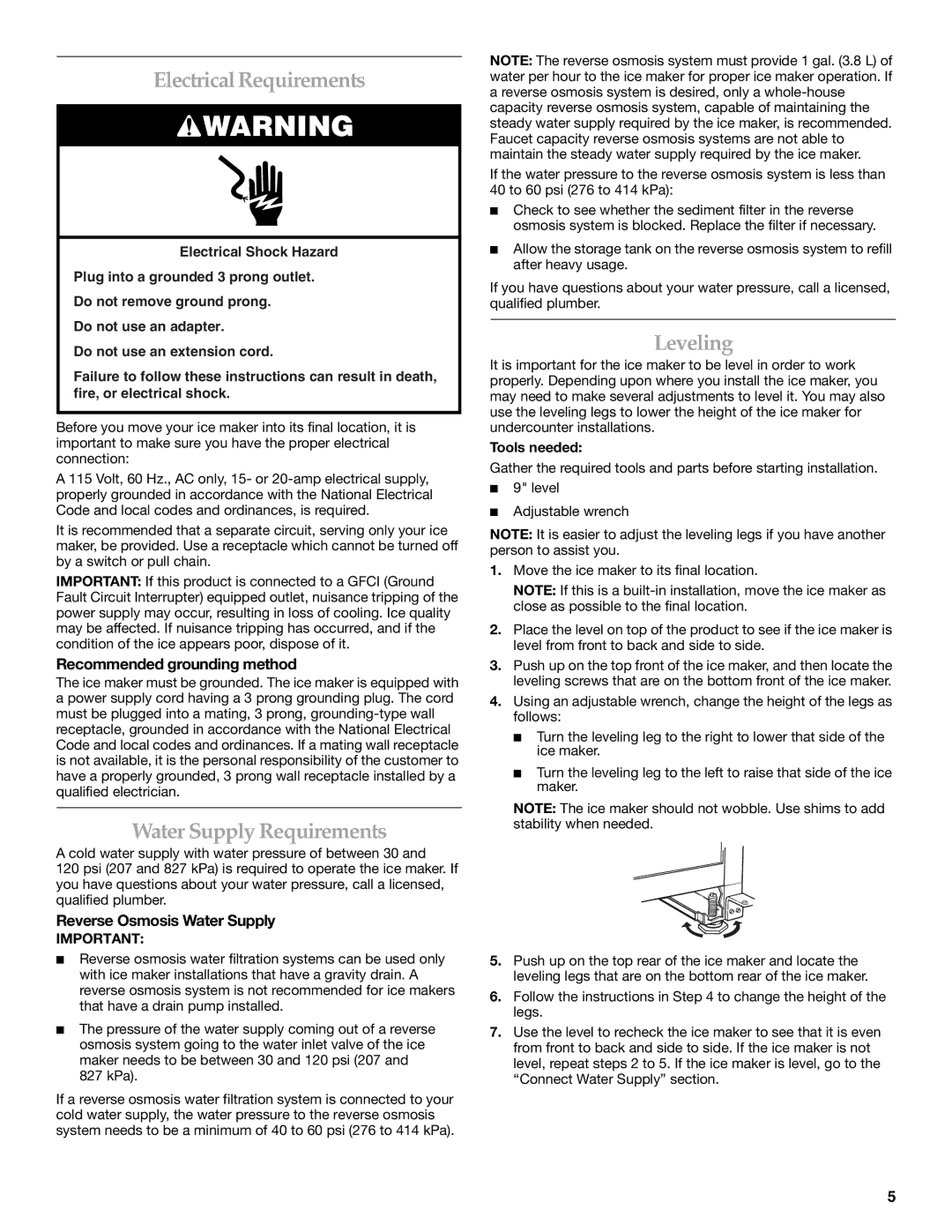W10206425A specifications
The KitchenAid W10206425A is a versatile and essential component in many kitchens, known for its functionality and advanced features. This refrigerator water filter is designed specifically for various KitchenAid refrigerator models, ensuring that you have access to clean, great-tasting drinking water and ice.One of the main features of the W10206425A filter is its advanced filtration technology. This filter effectively reduces impurities and contaminants from your water, including chlorine taste and odor, lead, mercury, and various other harmful substances. This not only enhances the quality of your drinking water but also contributes to the safety and overall health of your family.
A distinctive characteristic of the W10206425A is its easy installation process. Designed with user convenience in mind, this filter can be replaced without requiring any special tools or complicated procedures. This means that homeowners can easily swap out old filters for new ones, promoting regular maintenance of their refrigerator's water system. Additionally, it is recommended to replace the filter approximately every six months to ensure continued high performance and efficient filtration.
The filter is also designed to improve the efficiency of the refrigerator's ice maker, providing consistently clear and fresh-tasting ice. This is particularly beneficial for those who frequently use ice in beverages, ensuring that the ice does not alter the taste of drinks through contamination.
In terms of compatibility, the W10206425A filter works with various KitchenAid refrigerator models, making it a reliable choice for many households. It is essential to check your refrigerator model to ensure compatibility before purchasing to avoid any issues during installation.
Moreover, KitchenAid is known for its commitment to quality and longevity. The W10206425A filter is constructed from durable materials designed to last through numerous filtering cycles while maintaining optimal performance.
In summary, the KitchenAid W10206425A water filter is a crucial accessory for any KitchenAid refrigerator, designed to provide superior filtration, ease of use, and compatibility with various models. Its features ensure that your water and ice remain pure and refreshing, making it a wise investment for your kitchen needs. Whether for daily hydration or entertaining, this filter enhances your overall kitchen experience.

